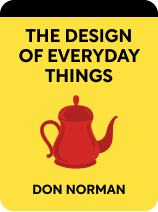

This article is an excerpt from the Shortform book guide to "The Design of Everyday Things" by Don Norman. Shortform has the world's best summaries and analyses of books you should be reading.
Like this article? Sign up for a free trial here .
What is human centric design? What makes this type of design effective?
Human centric design is a design philosophy that can be applied to any industry. It’s often thought of as a solution to bad designs.
Read more about human centric design and how it works.
Human Centric Design
One solution to this problem is human centric design. Human-centered design is not a subfield like industrial or interaction design. It is a design philosophy that can be applied in any design specialization. The goal of human-centered design thinking is to flip the traditional design process on its head by focusing on human needs and behaviors first, and designing products to fit those needs, rather than designing a product and hoping that users figure out how to use it.
Let’s use a simple fork as an example. The traditional design process would most likely begin with a designer thinking, “I’d like to design a new kind of fork.” She would then brainstorm new versions of the fork, create sketches and prototypes of those ideas, and tweak those prototypes until she was happy with the finished product.
Instead of a concrete product idea, a human-centered design thinking approach would begin with a set of questions: “What tools do people use to eat food? What problems do they run into with those tools? How can they be improved?” The designer would then observe different types of people eating different types of food, conduct interviews with people about their preferred cutlery, and research the history of eating utensils. She would identify the main problems in the current technology and only then begin to brainstorm ideas for how to address those needs.
The Speed of Technological Development
Modern technology evolves exponentially faster than ever before. While previous generations may have had one phone per household that was only updated after decades of use, we now have personal cell phones, with new and improved models being released twice a year. In contrast, design practices and principles evolve much slower. This means that technology is outpacing our ability to effectively interact with it.
This creates a paradox: Technology simplifies our lives, but the more advanced technology becomes, the more difficult it is to learn and operate, which adds complication. We see this when users buy a new, state-of-the-art television, only to be overwhelmed by the endless remote control buttons and ultimately only learning to use one or two features.

———End of Preview———
Like what you just read? Read the rest of the world's best book summary and analysis of Don Norman's "The Design of Everyday Things" at Shortform .
Here's what you'll find in our full The Design of Everyday Things summary :
- How psychology plays a part in the design of objects you encounter daily
- Why pushing a door that was meant to be pulled isn't your fault
- How bad design leads to more human errors






